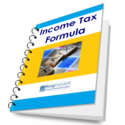This article emphasizes the multiple benefits of cost averaging, and describes how to practice it.
Stock markets are volatile in the short term. Many a times, you would have seen that the market drops the day after you buy shares! Similarly, the markets can go up after you sell shares.
Let’s accept it – there is no way to predict the day-to-day movements of the market. (Please read “An Introduction to Technical Analysis” to know more about it). There is always the element of risk involved in all your market movements. Although optimal, you can not always buy at the bottom, and sell at the top – timing the market is a futile exercise.
So, can anything be done to reduce the risk of timing? Yes – through a very simple concept called Cost Averaging, or Rupee Cost Averaging.
What is Cost Averaging?
Cost Averaging is a procedure through with you can eliminate the effect of timing the market, and thus, can significantly reduce the risk associated with market volatility. In fact, using Cost Averaging, you can actually benefit from market volatility!
Sounds strange? Maybe! So let’s know more about Cost Averaging, and find out how it can be implemented.
Methodology
In cost averaging, you make fixed, periodic (usually monthly) investments, irrespective of the level of the market.
This means that you invest a fixed amount in an asset every month, totally disregarding the price of the asset. The benefit is that when the price of the asset is low, you would get more of it for the same amount, whereas if the price of the asset is high, you would get less of it for that amount.
The result – you would buy more of it when the price is low, and less of it when the price is high! Thus, the average price of acquisition for the asset gets reduced. And remember, this happens automatically – you just have to ensure that you invest the same amount every month in the same asset!
Let’s understand this using an example.
Example
Let’s suppose you decide to invest Rs. 5000 every month in shares of ITC. You start investing on 7th January, and invest Rs. 5000 on every 7th.
Amount = Rs. 5,000
Period = 1 Month
Asset = Shares of ITC
In the first month, the price of each ITC share is Rs. 200. So, you end up buying 25 shares (Rs. 5000 / 200 per share = 25 shares). Your cost of acquisition is Rs. 200 per share.
In the second month, the price of each ITC share is Rs. 190. So, you end up buying 26 shares (Rs. 5000 / 190 per share = 26 shares). Your cost of acquisition is Rs. 190 per share, and the average cost of acquisition is Rs. 195 per share.
The following table shows these values for a period of 1 year (Like in real life, price movements of the ITC share are random).
{filelink=21} Download the spreadsheet to create your own scenario
| Date | Price of Share | Shares Bought | Total Investment | Total Shares | Avg. Cost of Acquisition |
| 7-Jan | 200 | 25 | 5000 | 25 | 200.00 |
| 7-Feb | 190 | 26 | 10000 | 51 | 194.87 |
| 7-Mar | 195 | 26 | 15000 | 77 | 194.91 |
| 7-Apr | 210 | 24 | 20000 | 101 | 198.48 |
| 7-May | 201 | 25 | 25000 | 126 | 198.98 |
| 7-Jun | 199 | 25 | 30000 | 151 | 198.98 |
| 7-Jul | 211 | 24 | 35000 | 174 | 200.61 |
| 7-Aug | 219 | 23 | 40000 | 197 | 202.74 |
| 7-Sep | 227 | 22 | 45000 | 219 | 205.18 |
| 7-Oct | 216 | 23 | 50000 | 242 | 206.21 |
| 7-Nov | 211 | 24 | 55000 | 266 | 206.64 |
| 7-Dec | 223 | 22 | 60000 | 289 | 207.91 |
Thus, you can see that when the price is less, more shares are bought (26 shares when price is Rs. 195), and when the price is more, less shares are bought (22 shares when price is Rs. 223). Due to this, the average cost of acquisition gets reduced. That’s how you benefit from market volatility if you can make disciplined investments every month!
And, since you don’t keep looking for a low price to buy, and instead buy on a fixed date in a disciplined way, there is no question of timing!
Steps to Follow for Cost Averaging
Periodicity
Decide the periodicity of your investments. This period should be such that it allows you to take advantage of market volatility.Usually, the period chosen is 1 month – that is, you would invest the fixed amount once every month.
Exact Date
Once you have decided the periodicity, you need to decide the exact date on which you would invest. It can be the 1st of every month, 5th of every month, 23rd of every month – anything that is convenient to you.But please bear in mind – you need to invest exactly on this date every month (or every period, if it is different from a month). If this date falls on a holiday, you can invest on the next working day.
Amount
Decide the amount that you would invest every month. This amount should be out of your disposable income, and should be such that you can easily spare it for investment every month, without fail.
Where to invest
Decide where you would invest your money. It can be shares of a company, or a mutual fund. Remember – Once you choose this, you would be investing in it every month.It is best and easiest to do Cost Averaging using a Systematic Investment Plan (SIP) of a Mutual Fund (MF). (Please read “A rupee a day, keeps worries away” to know more about this).
Let’s discuss this in detail.
Where to invest?
Now, this is a very important question! If you end up investing in the wrong asset, you would be putting good money after bad, and for a long time! So, it is very important to choose the correct asset for investing.
Ideally, you should choose a company which is expected to grow for some time to come, a company that is not in a stagnant industry or market. The reason is that the share price of a company would go up over the long term only if the company is growing. (Please read “Stocks – The winning bet for the long term” to find out more on this).
But there are some practical difficulties in investing in shares for cost averaging.
Lack of Fractional Ownership
There is no fractional ownership in shares. That is, you can own shares only in whole numbers – you can’t buy 25.6 shares of ITC! When you are investing a fixed sum, most of the times, you would need to buy a fraction.For example, in April, you need to buy Rs. 5000 / Rs. 210 per share = 23.81 shares. But you would have to buy 24 shares, thus exceeding your limit.
This is not very desirable in Cost Averaging.
Cost of Shares
Many good shares quote at a price which is in hundreds or thousands of Rupees per share. If you decide to invest a modest sum every month, like Rs. 5000, how many shares can you buy?For example, Reliance Industries quotes at around Rs. 2300. So, even if the price fluctuates, you would either end up buying 2 shares every month, or would spend more than Rs. 5000 every month!
Again, this distorts the principles of Cost Averaging.
What does this mean? What’s the point in learning about a good technique, if you can’t practice it, right?
Well, there is a very good and convenient way to practice Cost Averaging – and that is using a Systematic Investment Plan (SIP) of a Mutual Fund (MF). Please read “A rupee a day, keeps worries away” to know more about this.
Additional Tip
I strongly discourage distorting the principles of Cost Averaging – you should invest the same amount in the same asset every period. But there is one scenario in which I do recommend distorting it.
And this is when the markets are low. For long term investors, a dip in the market due to non-fundamental reasons presents a very good buying opportunity (Please see “Stock Market Crash – What you should do now” for more on this).
During such periods of irrational behaviour of the market, long term investors should invest even more. When sanity returns and the markets go up again, such investments can give phenomenal returns.
The same principle applies even to investments being made for Cost Averaging. When the market overreacts to some bad news or event, and goes down for non-fundamental reasons, you can invest more than your regular monthly amount – you can top up your monthly investment! And this would further reduce your average cost of acquisition!
Happy investing!!





